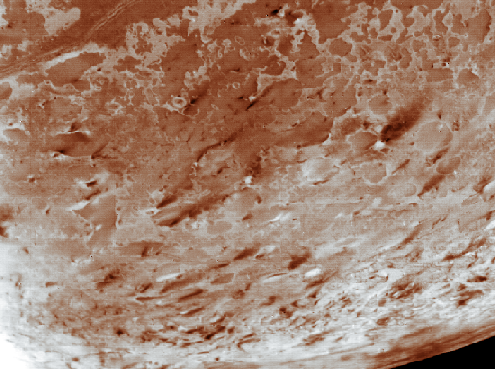Astronomy Picture of the Day
Discover the cosmos! Each day a different image or photograph of our fascinating universe is featured, along with a brief explanation written by a professional astronomer.
August 5, 1995

Geysers on Triton
Credit: NASA, Voyager Project